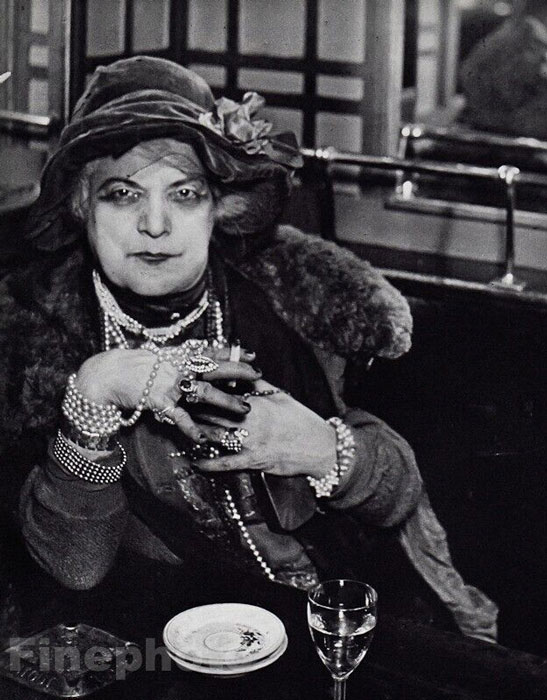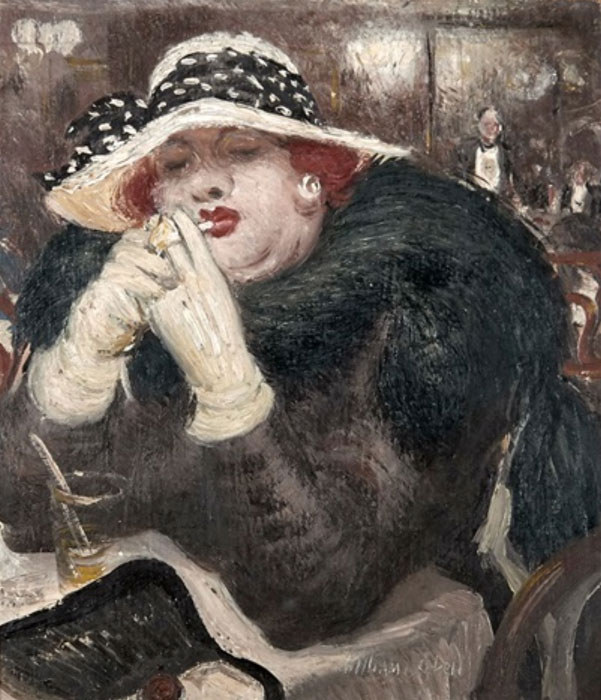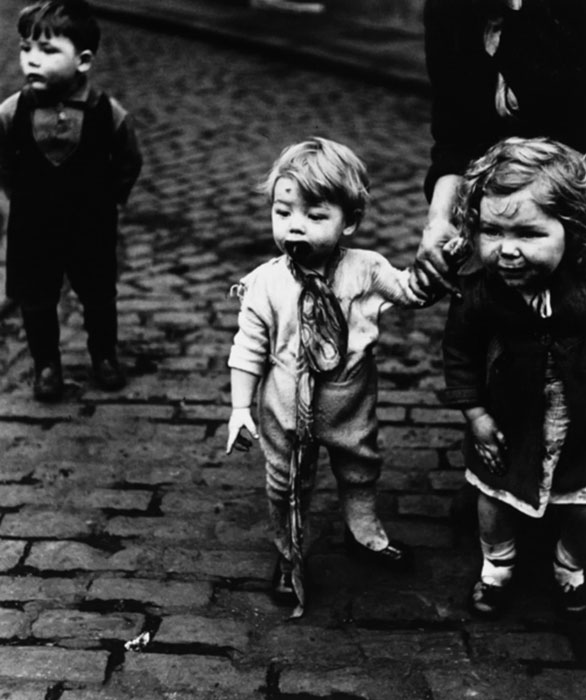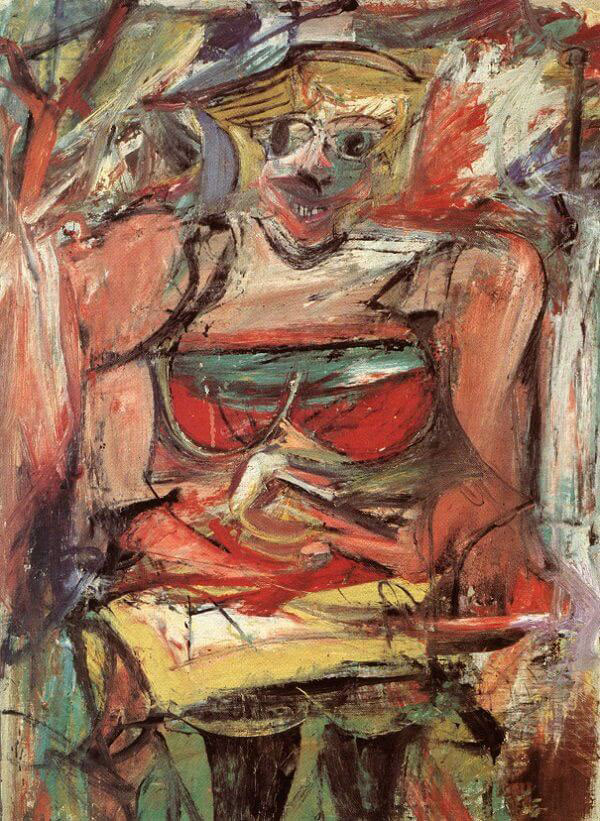Other Lives
Gael Newton AM (2024)
Editted version of an article published in the mid 1990s
 |
Halasz Gyula Brassai, Hungary 1899-1984 France
Miss Diamonds in the Bar de la Lime, Montmartre, c. 1932 gelatin silver photograph |
Photography appears so realistic that the aesthetic connections with other mediums can be overlooked. Looking at the pencil sketches and paintings by William Dobell of street children, it was apparent that the artist's intrest in street life subjects in the 1930s was also the interest of some well-known European photographers working at the same time.
In 1929 the young William Dobell took up a travelling scholarship and settled in London. The £500 award was meagre and Dobell had to share rough lodgings with other artists and, at one stage, a burglar. As one of them needed light and the other dark to carry out their work, the two men took turns to sleep in the one bed.
 |
| William Dobell Australia 1899-1970, study for The sickly twin in the lion house. 1936 |
The life of the people had been popular as the subject for genre paintings for several centuries and in the Victorian era writers like Dickens and artists of the time entertained their middle-class audience with scenes of how the other half lived. In the 1930s it was not just the depressed economic environment that directed a number of artists to take an interest in the characters of the street and the underworld. A philosophy in the arts — specifically called the documentary movement in film and photography — stressed that the ‘fine arts’ needed to engage with reality and to bridge the social gaps between classes.
Photographers such as Bill Brandt, who began his career in Paris in 1929, later produced many studies of working-class London. Brandt’s popular book, London, produced in 1934, was based on the even more popular book Paris by Night of 1933 by Brassai, a Hungarian born photographer based in Paris. Both were contemporaries of Dobell.
 |
| William Dobell Australia 1899-1970, Woman in a restaurant. 1934 oil on cardboard |
| |
 |
| Bill Brandt England 1904-1983, Children in Sheffield. 1937 |
Dobell made a number of studies, drawings and paintings of robust older women. The National Gallery’s painting Red lady 1937 is one of the better known of these works. Appearing as the madam of some brothel, filling every inch of the frame as much as her dress, the Red lady (from the red light district?) allows the artist — no doubt, thin and hungry — to draw her.
She is watchful but at ease and quite confident of her power, even if the refined world of daylight would find her gaudy and grotesque. Another Dobell portrait of a Woman in a restaurant 1934 (private collection) shows there is a remarkable coincidence between the Brassai and the Dobell ladies.
The work of Brandt and Brassai was well known in London in the thirties, but there is no suggestion that Dobell painted from photographs. The comparison merely shows the degree to which all image makers respond to the directions of their era regardless of their different mediums of expression.
 |
| William De Kooning, Woman V |
| |
Taking an even wider view, it is interesting to note the fondness of the period for depicting large women, often gross in appearance yet vital. Artists frequently used ‘madames’ from brothels as models. They appear like modern day inversions of the ancient Venus of Willendorf fertility goddesses. Willem de Kooning’s Woman V 1952-53 is a later example in this tradition.
Gael Newton
Then Curator, Australian Photography, National Gallery of Australia
more of Gael Newton's Essays and Articles
|